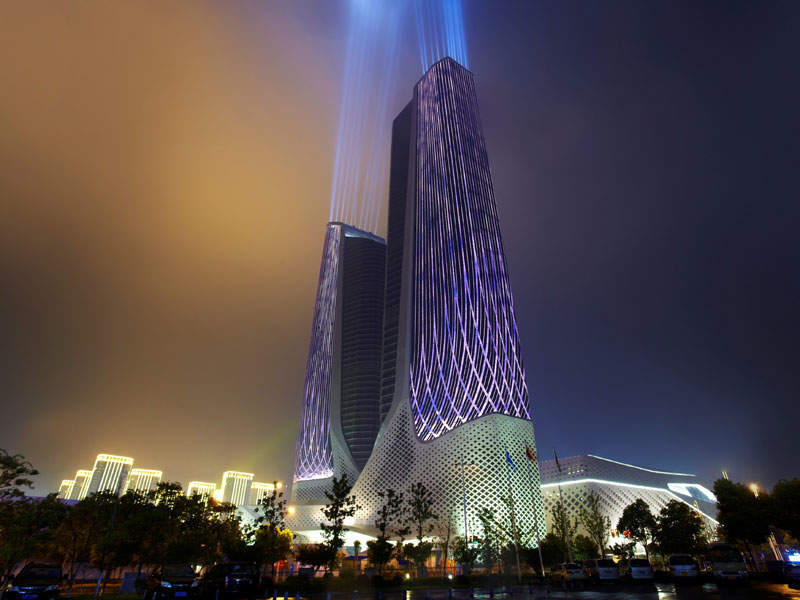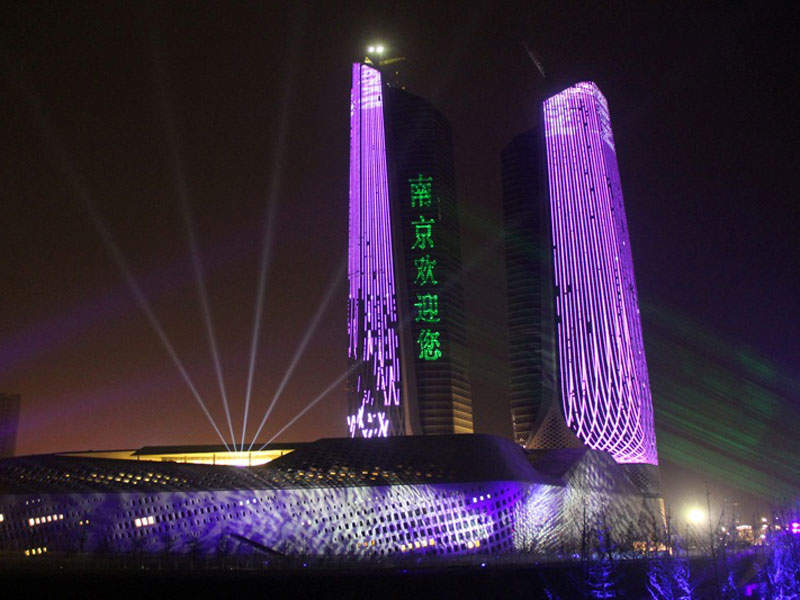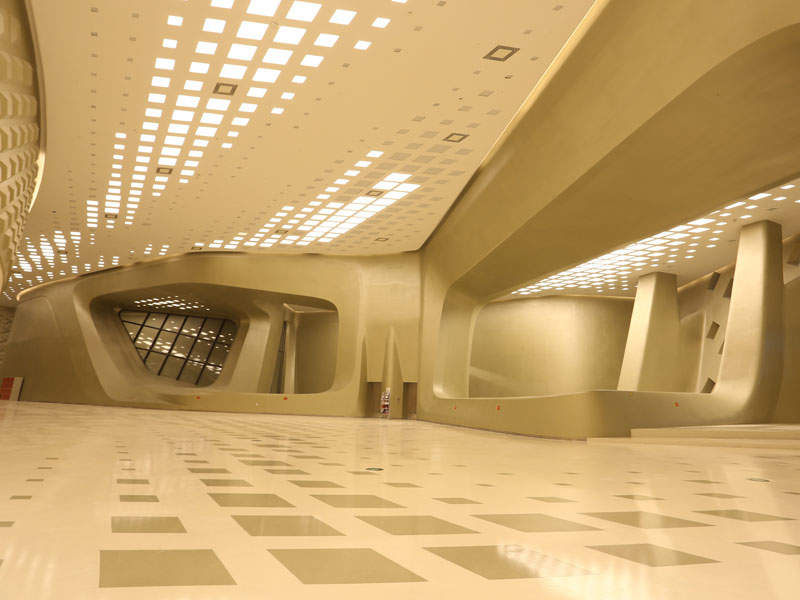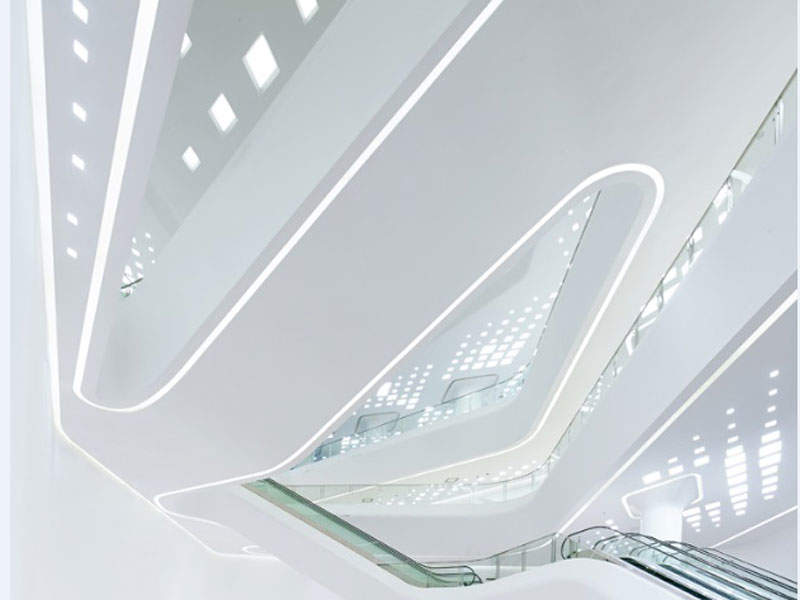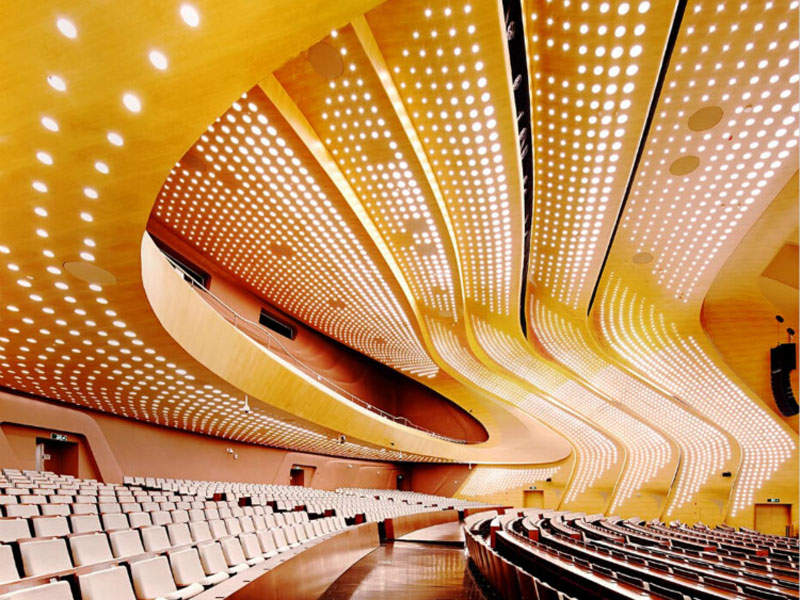Nanjing International Youth Cultural Center is a multi-use project being developed in the new central business district of Nanjing in the Jiangsu Province of China. Designed by the late Zaha Hadid, the project master plan includes two towers of varying heights featuring conference facilities, office space and hotels.
The master plan also includes a pedestrian bridge, which will link the facility with the river located on the other side.
Construction on the project commenced in 2011, with the conference centre of the facility. Named as the Nanjing Youth Olympic Conference Center, the conference centre was completed and opened for the 2014 Nanjing Youth Olympic Games.
The entire project is slated for completion at the end of 2016.
Inspiration for the cultural centre
Zaha Hadid was inspired by a sailing boat for the design of the complex, which resembles a space yacht when viewed at certain angles. The sailing boat was chosen to represent the youth setting out on their voyage.
Design of the youth cultural centre in Nanjing
The entire complex is shaped in the form of a stool with each of its four legs standing independently on the ground but connected together at a number of locations and heights. The design not only eliminates the need for pillars but also ensures the integrity of the building.
Facilities at the complex
The cultural centre complex is being built on a 5.2ha site and will have a floor space of 465,000m². The taller tower of the complex is 314m-high with 68 floors containing office space and a five-star hotel, whereas the smaller tower is 255m-high with 59 floors and will include a hotel and a conference centre.
A shared five-level mixed-use plaza is also part of the tower complex. The towers are connected to the plaza through two 15m and 21.12m-wide corridors.
The plaza covers an area of 194,000m² with a floor space of approximately 490,000m². It houses a conference centre, which includes a conference hall, multi-functional hall, meeting rooms, exhibition space, restaurants, VIP rooms, and retail space. Each of these areas is independent of each other and spread around the courtyard of the two towers.
At higher levels, these elements merge into one another creating an open landscape for pedestrians to walk through.
The conference hall of the plaza, with a seating capacity of 2,100, can be used for cultural and theatrical events. It features sloped seating with a total stage area of 800m². With a capacity of 500, the concert hall has a stage area of 280m² and can be used for small concerts, artistic performances and a number of events.
Façade
The facade of the towers and conference centre is made of glass curtain wall panels, glass-fibre reinforced concrete (GRC) and perforated aluminium panels. As many as 12,700 different shapes of GRC panels were used in the construction of the façade.
The facade also features a series of diamond shapes of different sizes, which vertically ascend the towers and connect them with the plaza below.
A computer-controlled LED lighting system is installed on the façade to create impressive lighting for the complex. A total of 700,000 nodes of LED lights were installed, which further accentuate the building’s fluidity design theme. In addition, flood LED lights project onto the sky, making the towers look even taller.
Contractors
China Construction Eighth Engineering Division was responsible for the construction of the conference centre.
Grand Sight Design International designed the interior lighting for the conference centre, while CDN Lighting provided its downlight series and linear lighting products.
CoxGomyl provided solutions for the façade of the conference centre. BuroHappold Engineering supplied structural, building services and facade engineering services for the project.
Philips supplied the LED lighting system for the project, while Kling & Freitag supplied loudspeaker systems.

